Apple IMAC G3 User Manual
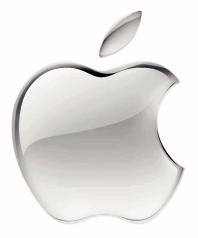
User’s Guide • 






 • Manuel de l’utilisateur • Benutzerhandbuch Manual del usuario • Manuale Utente • Guia do Usuário • Gebruikershandleiding • Handbok
• Manuel de l’utilisateur • Benutzerhandbuch Manual del usuario • Manuale Utente • Guia do Usuário • Gebruikershandleiding • Handbok
Brukerhåndbok • Brugerhåndbog • Käsikirja • 


 •
• 
 •
• 



Once you’ve set up your iMac and followed the onscreen guide to connect to the Internet, what’s next? Read on to find out how to get the most out of your iMac:
2 Your iMac at a glance
4 Mac OS X basics
8What you can do with your iMac
10 Listen to music on your computer or on the go 12 Create and edit your own movies
14 Search the Internet
16 Get more out of the Internet
18 Send and receive email
20 Organize, plan, and create
22 Keep your iMac’s software up-to-date
24 Learn more and solve problems
30 Install memory and an AirPort Card
32 Work more comfortably
34 Safety, cleaning, and power management
1
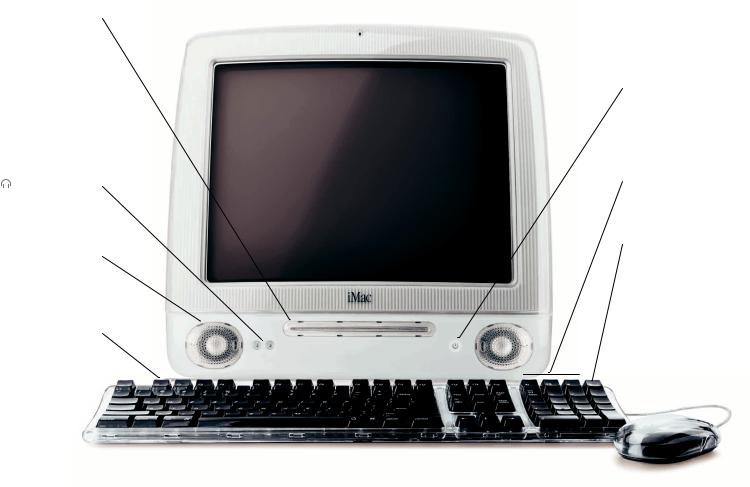
Your iMac at a glance
Your computer has these built-in features:
CD-ROM or  CD-RW drive
CD-RW drive
Install software, use applications, and listen to music CDs. If you have the CD-RW drive, you can create your own CDs. (For use only with standard size, circular discs.)
Headphones port 
Two internal  stereo speakers
stereo speakers
USB port 
Connect a USB device, such as a joystick or graphics tablet.

 Microphone
Microphone
 ® Power button
® Power button
Turn your computer on or put it to sleep.

 Volume controls
Volume controls

 Media Eject key
Media Eject key
Eject a CD.
Apple Pro Mouse
An optical mouse you can use on almost any surface.
2
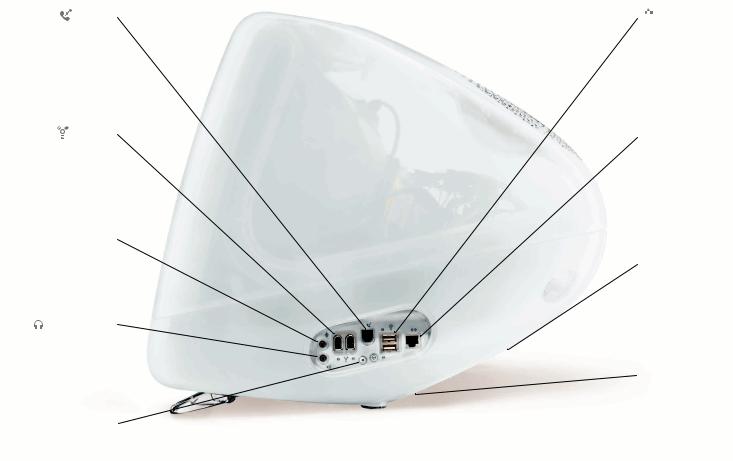
Modem 
Connect to the Internet, browse the World Wide Web, and send email.
FireWire 
Transfer video from a DV camera. Connect external hard disk drives, printers, and scanners.
 Sound input
Sound input 
Record sounds using an analog microphone or other audio device.
Sound output
Connect headphones, external speakers, and analog audio devices.
 Reset button
Reset button 
Use during troubleshooting to restart your computer.

 USB
USB
Connect printers, Zip and other disk drives, digital cameras, joysticks, and more.

 Ethernet
Ethernet
Share files with another computer and access a computer network, printer, or the Internet.
 VGA output
VGA output
Connect an external monitor or television for video mirroring.
 Access door
Access door
Install additional memory and an AirPort Card for wireless networking.
To learn more about your iMac’s features:
mChoose Mac Help from the Help menu, then click Go under “Discover my iMac.”
3

Mac OS X basics
The Macintosh desktop is your starting place.
Apple menu

Use to change system settings, open recent items, and restart or shut down your computer. To see the menu, click the apple ( ) in the menu bar.
Window buttons 

Click the red button to close the window, the yellow one to minimize it into the Dock, and the green one to resize it.
View buttons 

Click to see your files as icons, in lists, or in columns.
Finder icon 
Click to open a Finder window so you can see the files and applications on your computer.

 Modem status
Modem status
Use this menu to connect to and disconnect from the Internet using
a dialup modem.

 Toolbar button
Toolbar button
Click to show or hide the toolbar.

 Toolbar icons
Toolbar icons
Click to navigate quickly to different folders. Your home folder contains your personal documents.
To learn more about Mac OS X:
mSee the Welcome to Mac OS X document in the Documents folder on your hard disk.
 Trash
Trash
Drag an item here to delete it. Items remain here until you choose Empty Trash from the Finder menu.
4
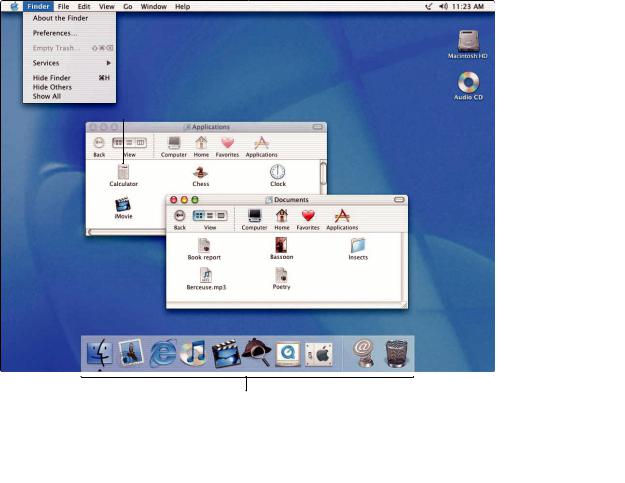
Application menu

Shows the name of the application you’re using.
Use to set preferences or quit applications (other than the Finder).
Application

Applications are software programs (such as a game or word processor) that you use with your computer. Double-click an application’s icon to open the application.
Document

Documents are files that you create with an application (such as a letter you create with your word processor). Doubleclick the icon to open the file in the application used to create it.
Dock
Click icons in the Dock to open applications, documents, folders, or minimized windows.

 Disc
Disc
This appears when a CD is in the disc drive. Double-click the icon to see what’s on the disc. To eject a disc, press and hold the Media Eject ( ) key on the keyboard.
) key on the keyboard.

 Folder
Folder
Folders help organize your files and applications. Doubleclick a folder to
see what’s inside.
5
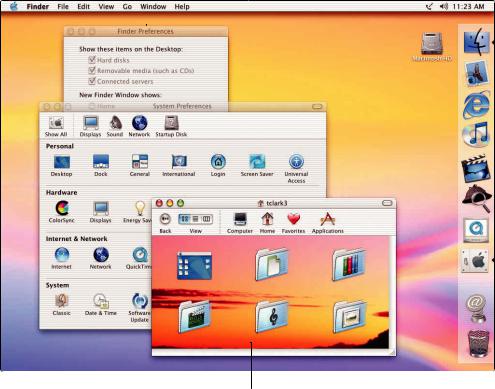
Change the Mac OS to suit your preferences.
There are lots of ways to customize Mac OS X.
To change Finder 
 settings, choose
settings, choose
Preferences from the Finder menu.
Choose System 
 Preferences from
Preferences from
the Apple menu to change most of your computer’s settings.
To select a desktop 
 background picture, open
background picture, open
System Preferences and click Desktop.
 To change icon sizes or the background of a Finder window, choose
To change icon sizes or the background of a Finder window, choose
Show View Options from the View menu.

 To change the size of the Dock or move it to a different place, open System Preferences and click Dock.
To change the size of the Dock or move it to a different place, open System Preferences and click Dock.
6
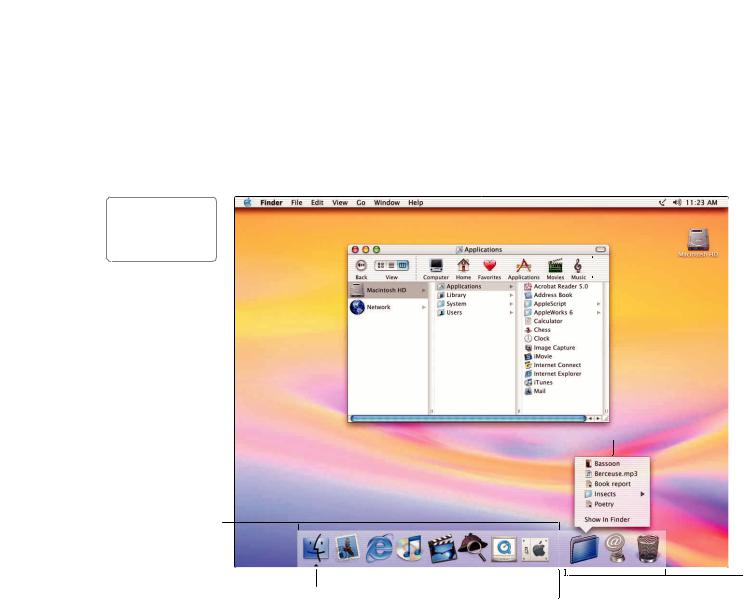
Click the icons in the Dock or toolbar to find and open files and applications.
.Drag applications, files, and folders into the Dock for one-click access.
This side of the Dock shows application icons.
shows application icons.
 The triangle indicates the application is open.
The triangle indicates the application is open.

 To set up the toolbar the
To set up the toolbar the
way you want it, choose Customize Toolbar from the Finder’s View menu, then drag items to
the toolbar.

 Press a folder icon to
Press a folder icon to
see its contents and open items in it.
|
This side of the Dock |
|
shows files, windows, |
Drag this bar up or down to |
and folders. |
resize the Dock. |
|
7
What you can do with your iMac
Not sure how to get the most out of your new iMac? Read on for a few ideas.
Make your own CDs. Use iTunes  to transfer music from your CD collection. If your iMac has a CD-RW drive, burn your own music CDs. Transfer music to an iPod or other MP3 player to listen on the go. Make a movie. Shoot video on a DV camcorder and import it into iMovie
to transfer music from your CD collection. If your iMac has a CD-RW drive, burn your own music CDs. Transfer music to an iPod or other MP3 player to listen on the go. Make a movie. Shoot video on a DV camcorder and import it into iMovie  . Then rearrange, edit, polish, and add titles and soundtracks. Connect to the Internet to send email and browse the Web, or use iTools
. Then rearrange, edit, polish, and add titles and soundtracks. Connect to the Internet to send email and browse the Web, or use iTools  to post digital photos on the Web for everyone to see.
to post digital photos on the Web for everyone to see.
Browse through the next few pages to find out more.
8
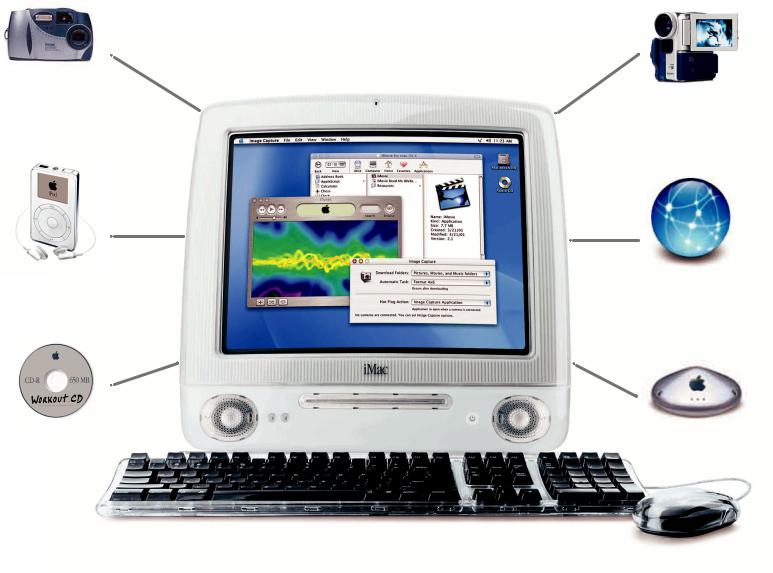
Send digital photos to friends and family.
Put up to 1,000 songs in your pocket.
Listen to music and burn your own CDs.
The iMac is your digital hub.
Import and edit home movies.
Send email and surf the 'Net.
Connect to the Internet wirelessly.
9
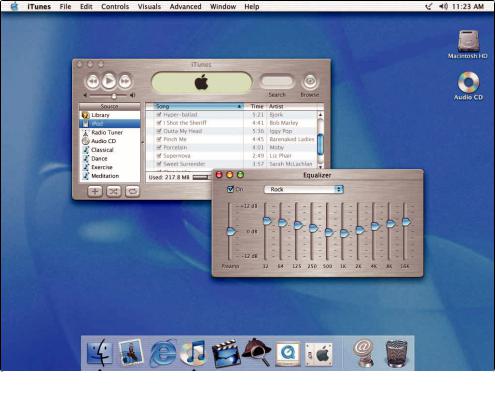
Listen to music on your computer or on the go.
Use iTunes to create a library of music and make your own CDs.
Library
Your collection of songs, imported from your own audio CDs or downloaded from the Internet. Easily browse or search for music.
Radio Tuner
Choose from hundreds of Internet radio stations – jazz, rock, talk, and more.
Audio CDs
Play an audio CD on your computer. Import songs to your Library to play them without the CD.
To learn more about iTunes:
mSee iTunes Help, available in the Help menu.
mGo to www.apple.com/itunes
Portable music
If you have an Apple iPod, transfer up to 1,000 songs for listening on the go. Go to www.apple.com/ipod for more information.
Playlists
Make personalized playlists using songs from your Library. Arrange your music by mood, artist, genre, or however you like.
Equalizer
Adjust the sound to your tastes using the 10-band EQ with 22 presets.
10
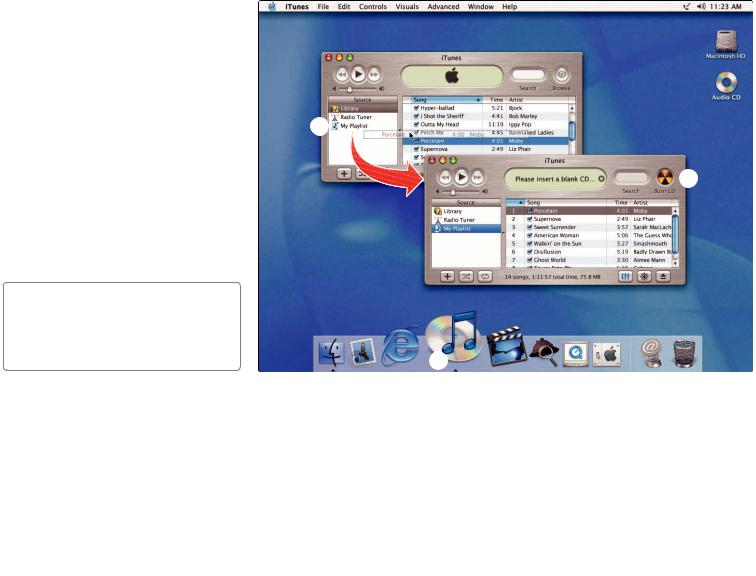
If your computer has a CD-RW drive, you can create your own
music CDs.
2
3
.You can fit up to 74 minutes of songs on a standard music CD.
.To find out which recordable CDs work best with your computer, go to
www.apple.com/itunes
1
Click the icon in the Dock to 1. open iTunes.
Drag songs from the Library to a 2. playlist. Then click the playlist.
Click Burn CD and insert a CD-R disc. 3. Then click Burn CD again to start.
11
